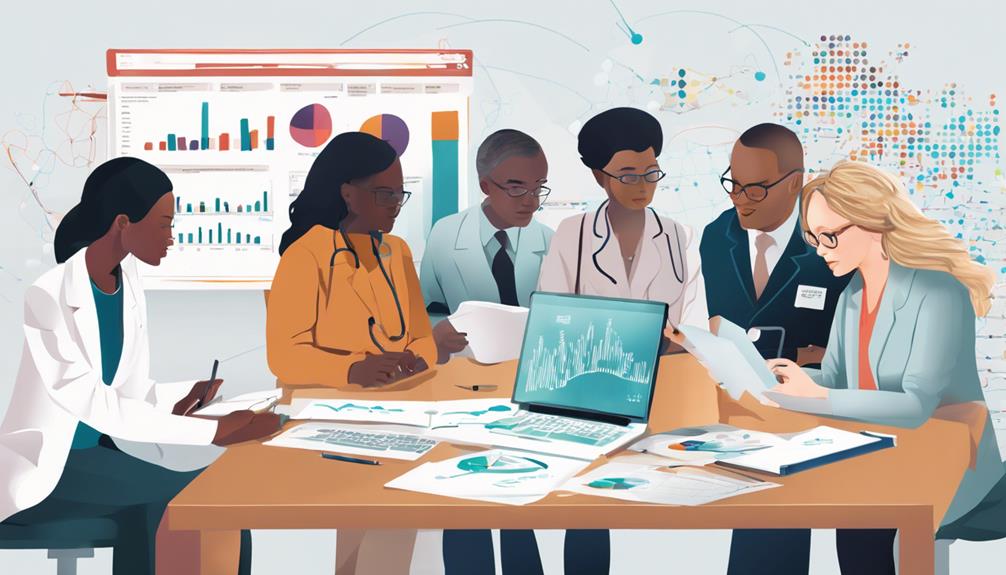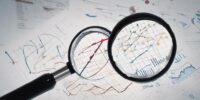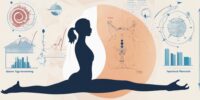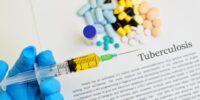Essentials of Biostatistics for Public Health by Lisa M. Sullivan – Summary and Review

This book serves as a valuable resource for students and professionals in public health, offering a comprehensive overview of key statistical concepts and methods used in the field. Readers will benefit from the author's clear explanations and real-world examples that illustrate the application of biostatistics in various public health settings.
The text covers a range of topics, including study design, data collection, descriptive statistics, hypothesis testing, and regression analysis, all of which are essential for understanding and conducting research in public health. By demystifying complex statistical techniques and highlighting their practical relevance, 'Essentials of Biostatistics for Public Health' equips readers with the knowledge and skills needed to critically evaluate research findings and make informed decisions in the field.
Key Takeaways
- Biostatistics is vital for data-driven decision-making in public health.
- Statistical significance distinguishes real health trends from random variations.
- Data visualization simplifies complex health data for better understanding.
- Statistical findings shape evidence-based strategies for community well-being.
Overview of Biostatistics
In the domain of public health, the mastery of biostatistics stands as an essential pillar for insightful data analysis and informed decision-making. Statistical significance is an important aspect within biostatistics, enabling researchers to determine whether observed differences are real or simply due to chance.
Epidemiological studies, a key application of biostatistics, aim to understand the distribution and determinants of health and diseases within populations. Through data visualization, complex information can be transformed into clear and understandable visuals, aiding policymakers in designing effective public health interventions.
The ability to interpret and communicate statistical findings is paramount in shaping evidence-based strategies for community well-being. Biostatistics empowers individuals with the tools to discern patterns, trends, and correlations within data, fostering a deeper understanding of health outcomes and risk factors.
Simplifying Statistical Concepts
Mastery of biostatistics in public health illuminates the path to simplifying statistical concepts, enabling a profound understanding of data analysis for informed decision-making. Simplified explanations serve as the cornerstone for grasping complex statistical foundations, empowering individuals to navigate the intricate domain of data interpretation with ease and confidence. By distilling intricate statistical concepts into digestible insights, individuals can access the potential to harness data effectively in public health settings.
Through simplified explanations, individuals can transcend the barriers of statistical complexity, fostering a culture of clarity and comprehension within the domain of biostatistics. This approach not only demystifies statistical jargon but also cultivates a sense of empowerment, allowing individuals to utilize statistical foundations for meaningful insights and impactful decision-making in public health contexts.
Basically, simplifying statistical concepts isn't merely about unraveling complexity but about revealing the transformative power of data-driven insights. By embracing simplified explanations, individuals can reveal the true potential of statistical foundations, paving the way for informed actions that drive positive change in public health initiatives.
Practical Applications in Public Health
Embarking on the exploration of practical applications in public health, one inevitably encounters the domain of real-world public health challenges.
Here, the intersection of biostatistics and public health reveals a landscape where data-driven health interventions take center stage.
Through the lens of statistics, public health practitioners can navigate the complexities of healthcare delivery, policy-making, and disease prevention with precision and purpose.
Real-world Public Health
Exploring the intricate terrain of real-world Public Health requires a deep understanding of practical applications and their impact on communities. In traversing these waters, one must address the pressing public health challenges that communities face daily. Real-world applications of biostatistics play a pivotal role in shaping policies, interventions, and programs aimed at improving population health outcomes.
By harnessing the power of data analysis, researchers and public health officials can identify trends, assess the effectiveness of interventions, and allocate resources efficiently. These tools enable decision-makers to tailor strategies to the specific needs of diverse populations, ultimately endeavoring towards health equity and social justice.
Embracing the complexities of real-world public health empowers individuals and communities to lead healthier, more fulfilling lives.
Data-driven Health Interventions
In exploring the world of real-world Public Health, the strategic implementation of data-driven health interventions emerges as a powerful catalyst for driving positive change in community well-being. Through the lens of data-driven interventions, public health strategies become more targeted, efficient, and impactful, leading to tangible improvements in population health outcomes.
Leveraging data allows for the identification of key health trends, disparities, and potential areas for intervention, enabling public health professionals to tailor their strategies with precision and insight. By embracing data-driven approaches, communities can empower themselves with evidence-based solutions, fostering a culture of proactive health management and informed decision-making.
This synergy between data and public health not only enhances the effectiveness of interventions but also promotes a sense of autonomy and empowerment among individuals aiming for healthier communities.
Critical Analysis of Sullivan's Approach
Sullivan's approach to biostatistics education stands out for its innovative teaching methods, emphasis on data interpretation accuracy, and practical application examples that resonate with students in the field of public health.
By incorporating real-world scenarios and hands-on exercises, Sullivan successfully engages learners and fosters a deeper understanding of statistical concepts.
This approach not only enhances students' statistical proficiency but also equips them with the skills needed to make informed decisions in public health practice.
Sullivan's Teaching Methods
Sullivan presents an innovative teaching approach that challenges traditional methods in biostatistics education. Her emphasis on dynamic teaching strategies engages students actively, fostering a deeper understanding of statistical concepts. Through practical demonstrations, she brings statistical theory to life, making it more relatable and easier to grasp. This hands-on approach not only enhances learning but also instills a sense of confidence in students, empowering them to apply statistical methods effectively in real-world public health scenarios.
- Sullivan's teaching methods spark curiosity and excitement in students, creating a vibrant learning environment.
- By incorporating active learning techniques, Sullivan assures that students are actively involved in the learning process, promoting better retention of information.
- Practical demonstrations help students bridge the gap between theory and application, fostering a deeper appreciation for the relevance of biostatistics in public health.
Data Interpretation Accuracy
With a focus on data interpretation accuracy, the foundation of Sullivan's innovative teaching methods is scrutinized, revealing the depth of statistical comprehension instilled in students.
Sullivan's approach emphasizes the critical role of data accuracy in drawing meaningful conclusions in public health research. By honing statistical precision and analysis skills, students are equipped to navigate the complexities of interpreting data effectively.
Sullivan's emphasis on precise interpretation guarantees that students grasp the nuances of statistical analysis, enabling them to make informed decisions based on sound evidence.
Through a meticulous exploration of data accuracy, Sullivan cultivates a culture of rigorous analysis, empowering students to contribute meaningfully to the field of public health by drawing reliable conclusions from data sets.
Practical Application Examples
In fostering a culture of rigorous analysis, students under Sullivan's guidance dissect practical application examples with precision and insight. Real-life examples serve as the foundation for learning, allowing students to bridge theoretical knowledge with hands-on exercises.
Through these applications, students develop a deep understanding of how biostatistics can be utilized in various public health scenarios, empowering them to make informed decisions in their future careers. The practical nature of these examples not only enhances comprehension but also instills a sense of confidence in applying statistical methods to solve real-world problems.
Impact on Public Health Research
The profound influence of biostatistics on shaping the landscape of public health research cannot be overstated. Statistical methods play a pivotal role in uncovering public health implications and guiding impactful research through rigorous data analysis. By harnessing the power of biostatistics, researchers can draw meaningful conclusions from complex health data, leading to advancements in disease prevention, health promotion, and policy development.
| Benefits of Biostatistics in Public Health Research | Emotional Impact |
|---|---|
| Enables evidence-based decision-making | Empowerment |
| Identifies health disparities and risk factors | Compassion |
| Evaluates intervention effectiveness | Hope |
| Guides policy recommendations | Resilience |
This table serves as a reminder of the emotional resonance that underlies the technical prowess of biostatistics. Through its application in public health research, biostatistics empowers individuals, instills compassion, fosters hope, and strengthens resilience within communities. It is not merely about numbers and calculations; it is about the profound impact on human lives and the collective well-being of society.
Key Takeaways for Readers
Revealing profound insights into the transformative power of biostatistics in public health research, readers are provided with invaluable key takeaways essential for understanding the impact of statistical methods on enhancing societal well-being.
- Key Concepts: The book explores key statistical concepts such as hypothesis testing, confidence intervals, and regression analysis, equipping readers with the fundamental tools necessary to navigate the complex landscape of public health data analysis.
- Application Examples: Through real-world examples and case studies, readers gain a practical understanding of how biostatistics can be applied to address pressing public health issues, ranging from disease outbreaks to healthcare policy evaluations.
- Empowerment Through Knowledge: By mastering the principles outlined in the text, readers are empowered to critically evaluate research findings, make informed decisions, and actively contribute to the advancement of public health initiatives, thereby fostering a society built on evidence-based practices and informed choices.
Enhancing Statistical Literacy
Enhancing statistical literacy provides individuals with the ability to decipher data complexities, empowering them to make informed decisions based on evidence and reasoning. Improving understanding of statistical literacy enables people to navigate the vast sea of information in today's world. By honing this skill, individuals can critically evaluate studies, surveys, and reports, distinguishing between reliable data and misleading information.
| Benefits of Improving Statistical Literacy |
|---|
| 1. Enhanced Decision Making |
| 2. Better Evaluation of Research Findings |
| 3. Increased Ability to Detect Biases |
| 4. Improved Communication of Findings |
| 5. Strengthened Analytical Skills |
Statistical literacy is not just about numbers; it is about empowering individuals to question, analyze, and draw meaningful conclusions from data. Through enhancing statistical literacy, individuals can break free from the shackles of misinformation and make choices that align with their values and beliefs. In a world inundated with data, statistical literacy is the beacon that guides individuals towards enlightenment and freedom of thought.
Conclusion and Recommendations
With a blend of insight and foresight, the following recommendations pave the way for a future where statistical literacy reigns supreme.
- Embrace a culture of lifelong learning: Encourage individuals to continually enhance their statistical knowledge through courses, workshops, and self-study to stay abreast of the evolving field.
- Foster interdisciplinary collaborations: Promote partnerships between statisticians, public health professionals, and policymakers to guarantee that statistical methods are effectively applied to address complex public health challenges.
- Invest in innovative research: Allocate resources to support cutting-edge research that advances statistical techniques for analyzing public health data, ultimately leading to more informed decision-making and improved health outcomes.
Frequently Asked Questions
Can You Provide Examples of How Biostatistics Has Been Successfully Applied in Real-World Public Health Scenarios?
In real-world applications, biostatistics has proven invaluable in public health through case studies like tracking disease outbreaks, evaluating treatment effectiveness, and appraising risk factors. These examples showcase its critical role in improving community well-being.
How Does Lisa M. Sullivan's Approach to Teaching Biostatistics Differ From Other Textbooks in the Field?
In her teaching style, Lisa M. Sullivan offers a invigorating and engaging approach to biostatistics. Different from traditional texts, she simplifies complex concepts, making them accessible and relevant to students' public health aspirations.
Are There Any Limitations or Criticisms of Sullivan's Approach to Teaching Biostatistics for Public Health?
In examining Sullivan's approach to teaching biostatistics, limitations and criticisms may arise. Some learners might find the pace challenging or desire more practical applications. It's important to address these concerns for thorough understanding.
What Are Some Common Misconceptions or Pitfalls That Students May Encounter When Learning Biostatistics for Public Health?
Students may struggle with common misconceptions and pitfalls when learning biostatistics for public health. Understanding biostatistics in public health requires patience and practice. Embracing challenges helps build a solid foundation for future success.
How Can Individuals in the Public Health Field Continue to Improve Their Statistical Literacy and Skills Beyond the Basics Covered in Sullivan's Book?
To enhance statistical literacy beyond basics, individuals in public health must explore into advanced techniques through continuing education. Practical applications using statistical software offer hands-on experience important for mastering complex data analysis in the field.











